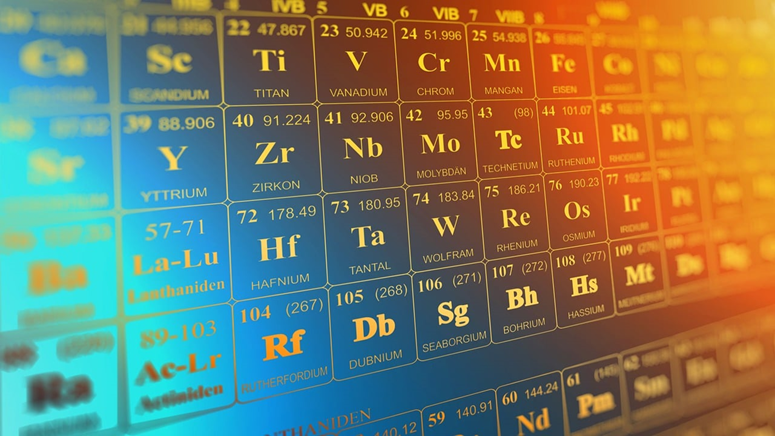?What is the heaviest element in the Universe

ShannonChocolate / Shutterstock.com
From oganesson to osmium: discover the secrets of superheavy elements
Chemical elements are the building blocks of matter. Some are natural, some are artificial. Some are light, some are heavy. But how to define the heaviness of an element? What is the heaviest element in the Universe? And why is it important to know this? In this article, we will present the different criteria for measuring the heaviness of an element, and help you discover the heaviest elements according to these criteria.
?what is the heaviness of an element
Chemical elements are classified according to their atomic number and their properties in the periodic table . But how do you know which is the heaviest element? It all depends on what you mean by “heavy”. In science, we must distinguish between mass and weight. Mass is a quantity of matter that does not change with location, whereas weight is a force that depends on gravity. Thus, when we speak of the heaviest element, we refer to its mass and not to its weight.
There are two ways to measure the mass of an element: atomic mass and density. Atomic mass is the number of protons and neutrons in the nucleus of an atom . Density is mass per unit volume. For example, a kilogram of lead takes up less space than a kilogram of feathers, because lead is denser.

heaviest natural element by atomic mass
The natural element that has the largest atomic mass is usually uranium . Uranium-238, which is the most abundant and stable natural isotope, has an atomic mass of 238, which corresponds to the number of protons and neutrons in its nucleus. Uranium 238 has 146 neutrons and 92 protons.
But there is another natural element that has an even higher atomic mass: plutonium (94 protons). Plutonium was discovered in 1940 in the laboratory by Glenn T. Seaborg and his team at the University of Berkeley, California, but it also exists naturally in certain meteorites. Plutonium 244 is therefore the heaviest known natural isotope.
Plutonium is a radioactive element , that is, it decays spontaneously, emitting particles and radiation. Plutonium-244 has a half-life of about 80 million years, which means it takes that long for half of the atoms to decay.
Plutonium is used as nuclear fuel in reactors and as fissile material in nuclear weapons . It presents health and environmental risks in the event of exposure or contamination.
the heaviest man-made element by atomic mass
But artificial elements even heavier than plutonium have been created. The oganesson (symbol Og), also called ununoctium, is the heaviest element ever synthesized. It has an atomic mass of 294, 118 protons and 176 neutrons. It was obtained in 2002 at the Joint Institute for Nuclear Research (JINR) in Dubna, near Moscow, Russia, by reacting californium 249 with calcium 48. It is named after nuclear physicist Yuri Oganessian, who contributed to the discovery of several superheavy elements.

The oganesson is a very unstable element, which lasts only a few fractions of a second before disintegrating. Only three atoms of 294 Og were observed when it was discovered. Its half-life is less than 1 millisecond.
Oganeson belongs to the family of noble gases, which are normally inert and non-reactive elements. But it could have different chemical properties from its congeners due to its electronic structure modified by quantum effects.

the heaviest element according to density
The atomic mass is not the only criterion for measuring the heaviness of an element. We can also consider the density, that is to say the mass per unit volume. For example, a kilogram of lead takes up less space than a kilogram of feathers, because lead is denser.
Density is not directly related to atomic mass, so uranium is not necessarily the densest element when comparing equal volumes of uranium and another element. The densest element is osmium, followed closely by iridium. These two elements have a density almost twice that of lead. Osmium has an estimated density of 22.61 g/cm3 and iridium has an estimated density of 22.65 g/cm3, but this value has not been confirmed experimentally for iridium.
Osmium is a rare element, found mainly in natural alloys with other platinum group metals. It has a blue-gray color and a metallic sheen. It is very hard and corrosion resistant.
Osmium is used as a catalyst in certain chemical reactions, as an additive in certain metal alloys and as a coating in certain optical applications. It poses health risks if inhaled or in contact with the skin .
Source : websites

